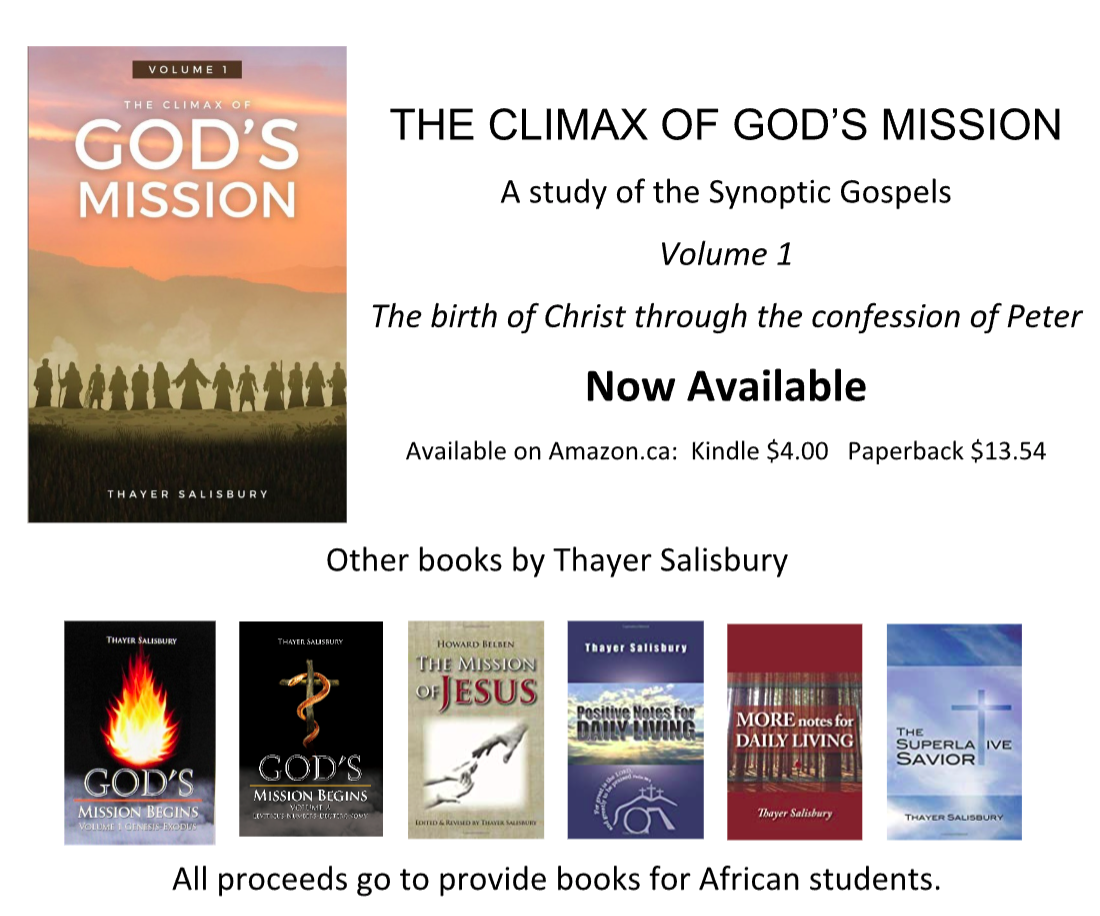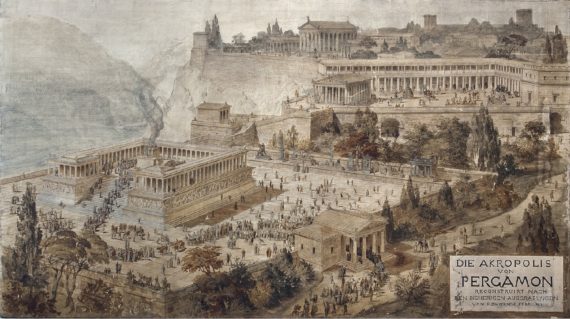Revelation 2:12–17
Part 1
Scripture Reading and Introduction




Jesus our Saviour is the most important and influential person in the world. While He walked on earth and lived among His people, He spoke words of eternal truth, power and beauty like no other words ever spoken or written then or since. On one occasion that we know of, He wrote something. He wrote on the ground when He was in the Temple talking with the scribes and Pharisees who had brought to him a woman whom they caught in adultery (John 8:1–11). After His resurrection, Jesus sent His Spirit to empower His chosen authors to bring us the New Covenant including seven letters Jesus Himself dictated to John in Revelation 2 and 3.
Today, Jesus our risen Saviour is among us (Revelation 2:1). We have the blessing and privilege to read, hear and heed His seven letters that He dictated to John to the angels, the messengers, of His people assembled together in Asia in the first century (Revelation 1:3). In this series of three articles, we focus on His letter to the church at Pergamum.
Jesus said,
12 “And to the angel of the church in Pergamum write:
The One who has the sharp two-edged sword says this:
13 ‘I know where you dwell, where Satan’s throne is; and you hold fast My name, and did not deny My faith even in the days of Antipas, My witness, My faithful one, who was killed among you, where Satan dwells. 14 But I have a few things against you, because you have there some who hold the teaching of Balaam, who kept teaching Balak to put a stumbling block before the sons of Israel, to eat things sacrificed to idols and to commit sexual immorality. 15 So you also have some who in the same way hold the teaching of the Nicolaitans. 16 Therefore repent; or else I am coming to you quickly, and I will make war against them with the sword of My mouth. 17 He who has an ear, let him hear what the Spirit says to the churches. To him who overcomes, to him I will give some of the hidden manna, and I will give him a white stone, and a new name written on the stone which no one knows but he who receives it.’”
Wow! These are powerful words, both encouraging and convicting. What is this place like where Satan lived and had his throne? Why would the situation there require Jesus to use such strong convicting language?
The Pergamum Jesus Knew in John’s Day
Jesus’ people in Pergamum, also known as Pergamon or Pergamos, lived about 80km or 48 miles as the crow flies north of Smyrna (Izmir today) and 25km or 15 miles inland from the Aegean Sea.
Like Smyrna, Pergamum had a beautiful productive setting among hills and fertile valleys at the Caicus River. Strabo, who lived from about 64 BC to AD 24, was a geographer, historian and philosopher from Pontus to the northeast of the Roman province of Asia on the Black Sea. He was contemporary to Jesus’ early and young adult life. He travelled widely around the Mediterranean Basin visiting and writing about many famous places that he saw. Strabo wrote about the quality of the land at Pergamum, “The Caïcus flows past Pergamum, through the Caïcus Plain, as it is called, traversing land that is very fertile and about the best in Mysia” (Strabo’s Geography, Book 13, Chapter 4, available online). Pergamum’s acropolis sits on a 305 metre (1,000 ft.) high steep conical hill with spectacular views of this green fruitful countryside all around it.
Strabo wrote about the history of the city. He said Pergamum ruled over neighbouring places and “is a famous city and for a long time prospered along with the Attalic kings…. Pergamenians have become famous in my time.”
Lysamichus who built up Smyrna left a large sum of 9,000 talents which Pergamene kings, notably Eumenes, used to build up Pergamum into a powerful and impressive city. It featured many temples to pagan gods, a library of over 200,000 books second only in size to Alexandria’s famous library, theatres, and temples for the worship of Roman emperors. Like Smyrna, Pergamum became an ally and friend of Rome, acting as capital of Asia until the first Roman emperor Augustus moved the capital status to Ephesus in 27 BC.
Pergamum had three levels topographically, spiritually and politically. The acropolis, upper city, to the north, was the domain of royalty, nobility and military commanders. The middle city down the steep slope to the south had the temples and athletic fields for the common people of less education. The third area across the Selinus river to the southwest had the famous Asclepeion temple and healing centre with bathing pool, library and other temples named after Asclepius, pagan god of healing.
So Pergamum was a leading city politically, culturally and religiously. Pergamenians worshipped many of the most influential pagan gods including:
* Zeus, the father of the Olympian gods,
* Athena, goddess of wisdom, handicraft and warfare and patron goddess of Athens (Greek people still call their capital city Athena after her today),
* Dionysus / Bacchus god of wine and revelry,
* Demeter, goddess of agriculture, harvest, grains and fertility,
* Asclepius, “saviour” and god of medicine and healing, whose symbol was a snake chosen for its ability to shed its old skin as a symbolic indicator of new birth and restored health,
* Serapis, a syncretistic Greek-Egyptian god with attributes of Hades and Demeter and
* Aphrodite / Venus, goddess of love, procreation, passion and pleasure.
Pergamenians also worshiped Roman emperors and human heroes.
Rome was the supreme military and administrative power during the lives of Jesus and His Apostles. During the first century its military, political and geographic rule were expanding significantly.
Against this background of human military, political and religious power, Jesus instructed John to write, “The One who has the sharp two-edged sword says this…” From what we have learned about Pergamum and from John’s vision of Jesus in Revelation chapter 1 we see that Jesus’ use of this metaphor of the long and sharp two-edged battle sword of judgment is particularly suitable for what He is about to say about the severity of the problems in Pergamum. This sword is larger than the one most frequently referred to in the New Testament.
With this image and His threat in verse 16, the sword of Jesus’ mouth frames the most serious concerns the Lord has with some in the Pergamene assembly. Similarly, in Rev. 19:15 and 21, John’s vision reveals Jesus using the sharp sword of His mouth for the final judgment of the nations.
Jesus’ words and the image of His sword are a reminder and guide for us who live in a world influenced by military, cultural and religious might that is contrary to God’s will which He reveals in His Word. We can take heart along with our faithful brothers and sisters in Pergamum, that Jesus’ spiritual and ruling powers are infinitely superior to any human kingdom. The joys of eternal life are vastly superior to any earthly pleasure.
Jesus goes on to say in verse 13,“‘I know where you dwell, where Satan’s throne is; and you hold fast My name, and did not deny My faith even in the days of Antipas, My witness, My faithful one, who was killed among you, where Satan dwells.’”
As Jesus knew all about the culture of Ephesus and Smyrna, He also knew about the difficult context in which His people in Pergamum lived. In Smyrna His people faced opposition from the synagogue of Satan, the assembly of the “accuser of our brethren,” as John identifies him in 12:10, “who accuses them before our God day and night.” Jesus’ people in Pergamum live where Satan’s throne is. A throne is a seat which also acts as a visual symbol of power and authority. Though no one can point to a specific physical seat, it is clear that Satan wielded much power and authority in Pergamum judging by its pagan rites and lifestyles. As Revelation so vividly shows us, Jesus’ sword, His power and authority, His victories and judgments, are vastly superior to any other.
Throughout Revelation, John contrasts the superiority of God and His throne over Satan’s throne or any other. We get our first revelation of God our Father’s and Jesus’ throne in His promise to His churches in His final letter of His seven letter, the one to Laodicea in 3:21, “‘He who overcomes, I will grant to him to sit down with Me on My throne, as I also overcame and sat down with My Father on His throne.’” From here on throughout Revelation, we have many glorious visions of God on His throne and with Jesus the victorious Lamb on His.
To be continued.
Golden, BC

